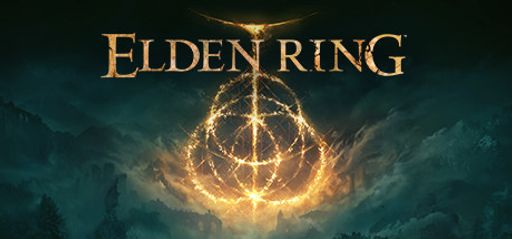 Let’s kick things off! Today, I discuss Elden Ring by FromSoftware, Inc.—the studio that both developed and published this epic title. I love the incredible vibe of the game. Its vast, mysterious world hides countless secrets and delivers epic battles that keep me on my toes. One Steam user even finished the main story in 91 hours while leaving tons of side content untouched. That performance sounds legendary! For fans who love exploring expansive open worlds, Elden Ring serves as the ultimate playground for discovery.
Let’s kick things off! Today, I discuss Elden Ring by FromSoftware, Inc.—the studio that both developed and published this epic title. I love the incredible vibe of the game. Its vast, mysterious world hides countless secrets and delivers epic battles that keep me on my toes. One Steam user even finished the main story in 91 hours while leaving tons of side content untouched. That performance sounds legendary! For fans who love exploring expansive open worlds, Elden Ring serves as the ultimate playground for discovery.
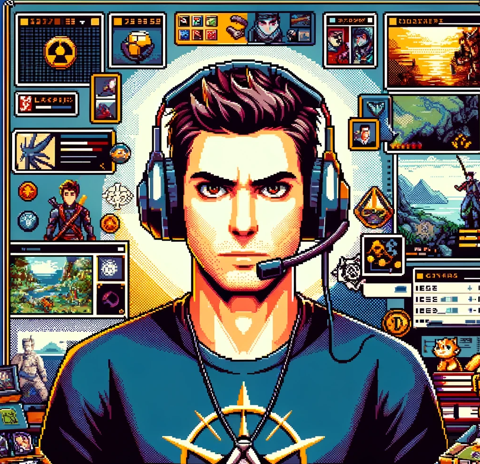 I have spent countless hours combing through every nook and cranny of the Lands Between. The intricate side quests, collectibles, and achievements form a treasure trove that invites exploration. FromSoftware crafted Elden Ring with intense attention to detail, and the game rewards players who dive deep. Even when critics complain about the steep difficulty curve, I view it as a deliberate design choice that makes every triumph feel well-earned.
I have spent countless hours combing through every nook and cranny of the Lands Between. The intricate side quests, collectibles, and achievements form a treasure trove that invites exploration. FromSoftware crafted Elden Ring with intense attention to detail, and the game rewards players who dive deep. Even when critics complain about the steep difficulty curve, I view it as a deliberate design choice that makes every triumph feel well-earned.
 From a competitive perspective, I love how the intricate gameplay mechanics give room for deep character customization and strategy. The controls might seem straightforward at first glance. As you unlock the full potential of different weapons, spells, and summons, you’re really challenged to master combat and timing. It reminds me a bit of what we see in other FromSoftware titles. Yet Elden Ring manages to innovate by offering a wide variety of playstyles. Whether you’re into bold melee encounters or prefer tactical spellcasting. It’s a balancing act that pushes advanced players like me to the limit.
From a competitive perspective, I love how the intricate gameplay mechanics give room for deep character customization and strategy. The controls might seem straightforward at first glance. As you unlock the full potential of different weapons, spells, and summons, you’re really challenged to master combat and timing. It reminds me a bit of what we see in other FromSoftware titles. Yet Elden Ring manages to innovate by offering a wide variety of playstyles. Whether you’re into bold melee encounters or prefer tactical spellcasting. It’s a balancing act that pushes advanced players like me to the limit.
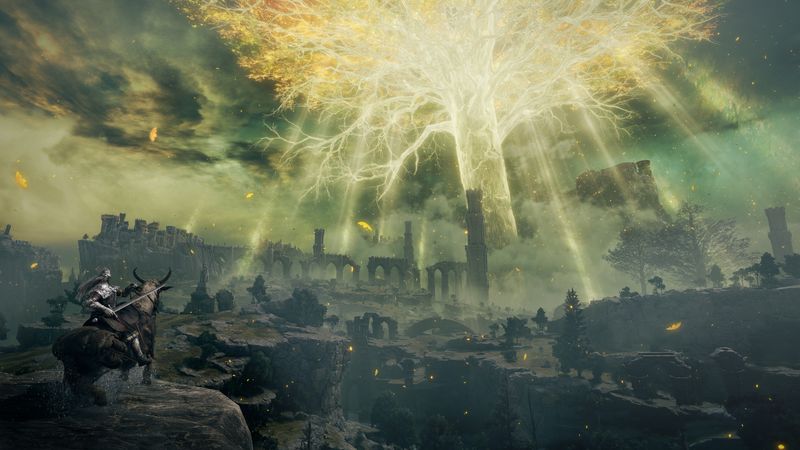
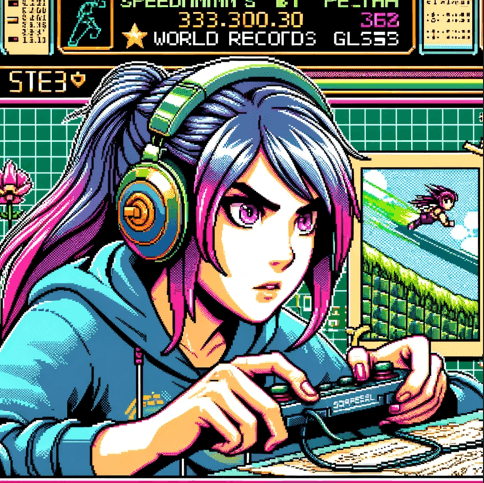 And hey, for those of us who love speedrunning, the environmental interactivity is a goldmine. Elden Ring offers multiple ways to journey across the vast fields and intricate dungeons. That opens up a lot of room for creative route planning and time-saving strategies. I’ve been mapping out the quickest ways to navigate the seamless landscape. The level design is so open and non-linear that it’s a unique challenge to optimize completion times without missing out on hidden secrets along the way.
And hey, for those of us who love speedrunning, the environmental interactivity is a goldmine. Elden Ring offers multiple ways to journey across the vast fields and intricate dungeons. That opens up a lot of room for creative route planning and time-saving strategies. I’ve been mapping out the quickest ways to navigate the seamless landscape. The level design is so open and non-linear that it’s a unique challenge to optimize completion times without missing out on hidden secrets along the way.
 Diving into the gameplay mechanics, I find it fascinating how Elden Ring balances intuitive controls with deep tactical layers. Whether it’s carefully timed dodges or experimenting with different equipment setups, every combat scenario feels like it’s pushing the limits. Comparisons are inevitable with past FromSoftware classics like Dark Souls, but here the open-world freedom adds a fresh twist that sets it apart.
Diving into the gameplay mechanics, I find it fascinating how Elden Ring balances intuitive controls with deep tactical layers. Whether it’s carefully timed dodges or experimenting with different equipment setups, every combat scenario feels like it’s pushing the limits. Comparisons are inevitable with past FromSoftware classics like Dark Souls, but here the open-world freedom adds a fresh twist that sets it apart.
 Right on, NewGamer. I’d add that the creative item usage is a highlight. The game often gives you multiple solutions to overcome obstacles or enemy encounters. Which means that the choices you make—from weapon upgrades to lore-based items—really influence your progression. This design encourages repeated exploration to uncover every alternative pathway. For someone like me who loves collecting every in-game secret, it’s endlessly fulfilling.
Right on, NewGamer. I’d add that the creative item usage is a highlight. The game often gives you multiple solutions to overcome obstacles or enemy encounters. Which means that the choices you make—from weapon upgrades to lore-based items—really influence your progression. This design encourages repeated exploration to uncover every alternative pathway. For someone like me who loves collecting every in-game secret, it’s endlessly fulfilling.
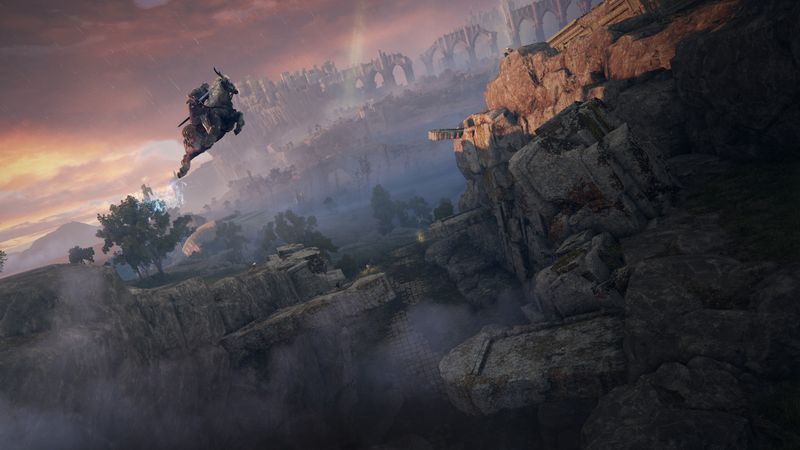
 And the mechanics genuinely translate to the story and narrative. Speaking of which, I was impressed by how the lore—crafted with a touch from George R.R. Martin—influences the gameplay environment. The layers of dialogue, environmental storytelling, and character backstories invite you to piece together the narrative like a challenging puzzle. Every NPC you encounter has a snippet of history that hints at a deeper mystery, creating a rich, immersive experience.
And the mechanics genuinely translate to the story and narrative. Speaking of which, I was impressed by how the lore—crafted with a touch from George R.R. Martin—influences the gameplay environment. The layers of dialogue, environmental storytelling, and character backstories invite you to piece together the narrative like a challenging puzzle. Every NPC you encounter has a snippet of history that hints at a deeper mystery, creating a rich, immersive experience.
 The narrative pacing. While some players feel the lore can be a bit overwhelming, I see it as a way to reward dedicated players who take the time to learn the world. The pacing is methodical enough that you’re never rushed. Instead, you’re encouraged to experiment and interact with the environment, which can be a real treat when you’re trying to shave off seconds from your run or simply enjoy the detailed backdrops during exploration.
The narrative pacing. While some players feel the lore can be a bit overwhelming, I see it as a way to reward dedicated players who take the time to learn the world. The pacing is methodical enough that you’re never rushed. Instead, you’re encouraged to experiment and interact with the environment, which can be a real treat when you’re trying to shave off seconds from your run or simply enjoy the detailed backdrops during exploration.
 Moving on to visuals and graphics, the game truly stands out. The artistry of Elden Ring often reminds me of a Van Gogh painting. Lush fields, eerie ruins, and breathtaking vistas that are both beautiful and intimidating. FromSoftware has always been known for its atmospheric art direction, and in this game, the attention to detail is more than just skin-deep. The color palettes, lighting, and dynamic weather systems all serve to heighten the emotional impact of your adventures.
Moving on to visuals and graphics, the game truly stands out. The artistry of Elden Ring often reminds me of a Van Gogh painting. Lush fields, eerie ruins, and breathtaking vistas that are both beautiful and intimidating. FromSoftware has always been known for its atmospheric art direction, and in this game, the attention to detail is more than just skin-deep. The color palettes, lighting, and dynamic weather systems all serve to heighten the emotional impact of your adventures.
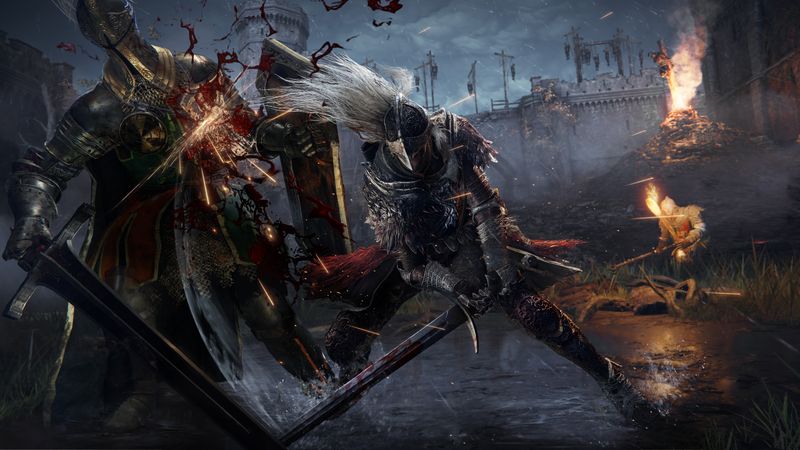
 Exactly. The visuals enrich both the storytelling and the gameplay. I especially appreciate how the game’s design encourages mastery of the terrain. Every ruination and scenic overlook is meticulously placed. Also, with FromSoftware leveraging state-of-the-art rendering techniques, you get a performance that remains impressive across various platforms, making the exploration of every hidden corner an absolute visual treat.
Exactly. The visuals enrich both the storytelling and the gameplay. I especially appreciate how the game’s design encourages mastery of the terrain. Every ruination and scenic overlook is meticulously placed. Also, with FromSoftware leveraging state-of-the-art rendering techniques, you get a performance that remains impressive across various platforms, making the exploration of every hidden corner an absolute visual treat.
 The sound design plays an equally crucial role. The soundtrack, with its haunting melodies and thunderous orchestral surges, perfectly complements the tension of battles and the eerie calm of exploration phases. Specific tracks during boss encounters set the tone for truly epic confrontations, and the environmental sound cues—like the rustling of leaves before an ambush—add precision to combat strategies. While the voice acting sometimes splits opinions, it does add a layer of character depth that’s rare in games of this scale.
The sound design plays an equally crucial role. The soundtrack, with its haunting melodies and thunderous orchestral surges, perfectly complements the tension of battles and the eerie calm of exploration phases. Specific tracks during boss encounters set the tone for truly epic confrontations, and the environmental sound cues—like the rustling of leaves before an ambush—add precision to combat strategies. While the voice acting sometimes splits opinions, it does add a layer of character depth that’s rare in games of this scale.
 Yes, the audio is a real immersion booster, and it helps in mapping out parts of the environment quickly during speedruns. The distinctive sounds associated with different enemy types or backdrop elements can be both a warning and a guidepost, steering you toward quicker completion routes while still soaking in the atmosphere.
Yes, the audio is a real immersion booster, and it helps in mapping out parts of the environment quickly during speedruns. The distinctive sounds associated with different enemy types or backdrop elements can be both a warning and a guidepost, steering you toward quicker completion routes while still soaking in the atmosphere.
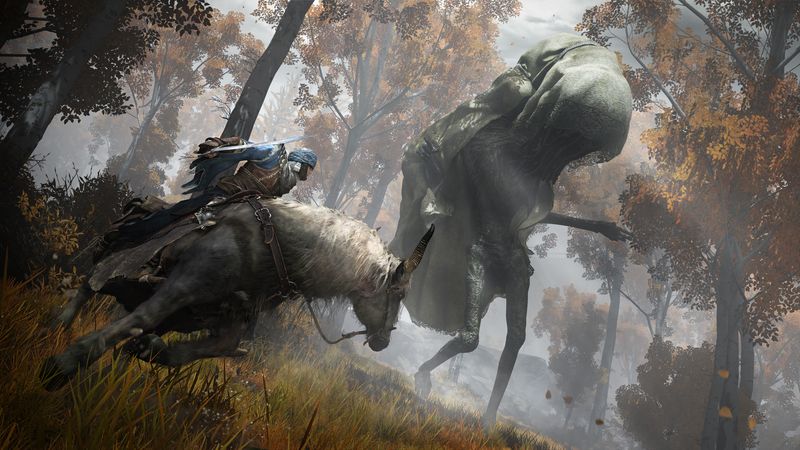
 And how about the characters? The richness in the backstories and the ideological dilemmas presented by the NPCs make the game world more immersive. The character design showcases a fascinating mix of myth and melancholy, where every major figure, boss, or even a seemingly trivial NPC carries a unique narrative weight. It’s inclusive too—covering various archetypes that weave seamlessly into the game’s overall mythos.
And how about the characters? The richness in the backstories and the ideological dilemmas presented by the NPCs make the game world more immersive. The character design showcases a fascinating mix of myth and melancholy, where every major figure, boss, or even a seemingly trivial NPC carries a unique narrative weight. It’s inclusive too—covering various archetypes that weave seamlessly into the game’s overall mythos.
 Absolutely. I spent hours over conversations with characters and diving into collectible lore snippets. It’s very rewarding to piece together their histories, which adds another layer to the game’s replayability. There are hidden storylines and branches that encourage you to replay certain sections to see everything the game has to offer.
Absolutely. I spent hours over conversations with characters and diving into collectible lore snippets. It’s very rewarding to piece together their histories, which adds another layer to the game’s replayability. There are hidden storylines and branches that encourage you to replay certain sections to see everything the game has to offer.
 In terms of challenge level, Elden Ring is quintessentially from the soulsborne genre—it’s tough but fair. The combat is tricky yet fluid, with clever enemy and boss designs that require both planning and quick reflexes. I appreciate that while there are sudden difficulty spikes, the game offers ways to adjust your approach through various builds and strategies. It’s a balancing act between intense combat encounters and moments that let you explore at your own pace.
In terms of challenge level, Elden Ring is quintessentially from the soulsborne genre—it’s tough but fair. The combat is tricky yet fluid, with clever enemy and boss designs that require both planning and quick reflexes. I appreciate that while there are sudden difficulty spikes, the game offers ways to adjust your approach through various builds and strategies. It’s a balancing act between intense combat encounters and moments that let you explore at your own pace.
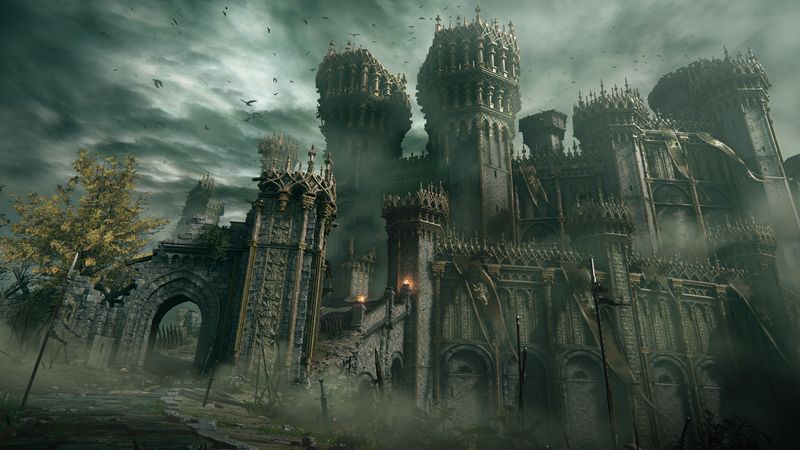
 The challenge level also creates immense replay value. Every run feels like you’re uncovering new secrets, unlocking shortcuts, or mastering a previously insurmountable boss fight. For those who love a continuous grind and optimization, each playthrough is an opportunity to improve, refine techniques, and even experiment with new route planning for faster completions.
The challenge level also creates immense replay value. Every run feels like you’re uncovering new secrets, unlocking shortcuts, or mastering a previously insurmountable boss fight. For those who love a continuous grind and optimization, each playthrough is an opportunity to improve, refine techniques, and even experiment with new route planning for faster completions.
 To wrap up our discussion with final thoughts, Elden Ring by FromSoftware is not just an action RPG—it’s an intricate masterpiece that pushes the boundaries of open-world design. It has something for every kind of player: expansive exploration for adventurers, deep lore and character arcs for narrative lovers, and challenging combat mechanics for competitive enthusiasts and speedrunners alike. It’s a game that uniquely blends artistic visuals, deep mechanics, and engaging audio to craft an unforgettable experience.
To wrap up our discussion with final thoughts, Elden Ring by FromSoftware is not just an action RPG—it’s an intricate masterpiece that pushes the boundaries of open-world design. It has something for every kind of player: expansive exploration for adventurers, deep lore and character arcs for narrative lovers, and challenging combat mechanics for competitive enthusiasts and speedrunners alike. It’s a game that uniquely blends artistic visuals, deep mechanics, and engaging audio to craft an unforgettable experience.
 I echo that sentiment—every secret and collectible lends the game an added richness that fuels long-term engagement. The smallest environmental detail can open up a new avenue of exploration for dedicated players. It’s like assembling a massive, intricate puzzle.
I echo that sentiment—every secret and collectible lends the game an added richness that fuels long-term engagement. The smallest environmental detail can open up a new avenue of exploration for dedicated players. It’s like assembling a massive, intricate puzzle.
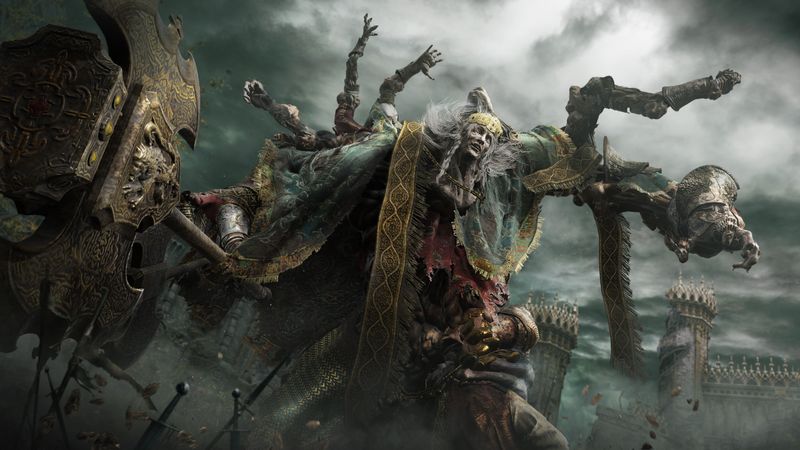
 From a gameplay perspective, the strategic depth and variable combat mechanics stand out. If you appreciated titles like Dark Souls or Bloodborne, you’ll definitely find the learning curve of Elden Ring rewarding in a way that’s both challenging and satisfying.
From a gameplay perspective, the strategic depth and variable combat mechanics stand out. If you appreciated titles like Dark Souls or Bloodborne, you’ll definitely find the learning curve of Elden Ring rewarding in a way that’s both challenging and satisfying.
 And for speedrunners, every movement, every dodge, and every shortcut is a chance to improve and push the boundaries of what we thought possible. It’s a game that not only tests our skills but constantly encourages us to explore its intricate design for faster, more efficient ways to experience it.
And for speedrunners, every movement, every dodge, and every shortcut is a chance to improve and push the boundaries of what we thought possible. It’s a game that not only tests our skills but constantly encourages us to explore its intricate design for faster, more efficient ways to experience it.
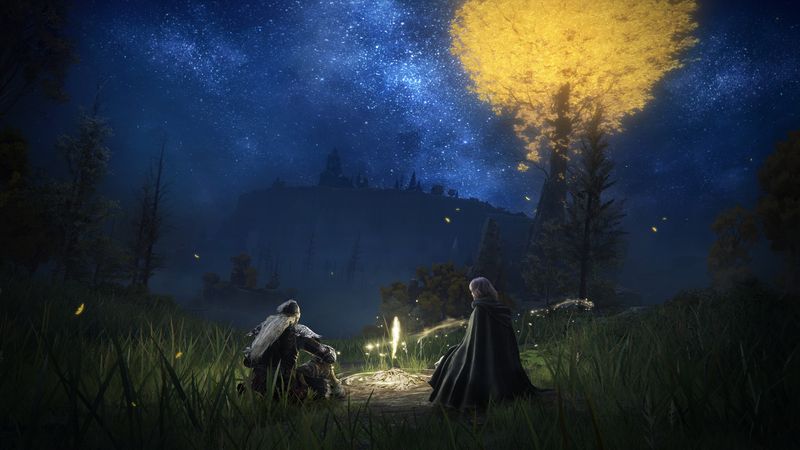
 For those looking to dive into a similar immersive experience, there are several excellent options to consider. Dark Souls III is a brilliant title from FromSoftware, offering a challenging yet beautifully crafted world. Bloodborne caters to fans of fast-paced, visceral combat in a dark and atmospheric universe. If you’re interested in a different take on combat that incorporates stealth elements while retaining difficulty, Sekiro: Shadows Die Twice is a great choice. Meanwhile, The Witcher 3: Wild Hunt provides a vast open world filled with rich narrative depth and engaging side quests. Perfect for exploration enthusiasts. Lastly, despite being older, Shadow of the Colossus remains a timeless masterpiece. Epic battles against monumental foes and minimalist yet powerful storytelling.
For those looking to dive into a similar immersive experience, there are several excellent options to consider. Dark Souls III is a brilliant title from FromSoftware, offering a challenging yet beautifully crafted world. Bloodborne caters to fans of fast-paced, visceral combat in a dark and atmospheric universe. If you’re interested in a different take on combat that incorporates stealth elements while retaining difficulty, Sekiro: Shadows Die Twice is a great choice. Meanwhile, The Witcher 3: Wild Hunt provides a vast open world filled with rich narrative depth and engaging side quests. Perfect for exploration enthusiasts. Lastly, despite being older, Shadow of the Colossus remains a timeless masterpiece. Epic battles against monumental foes and minimalist yet powerful storytelling.
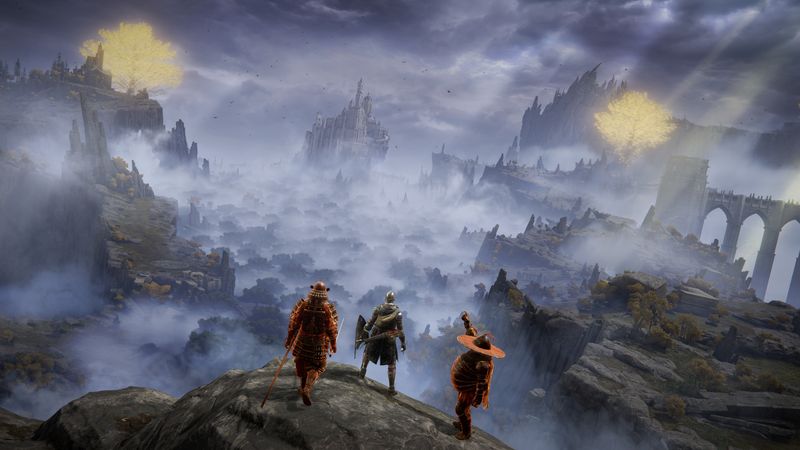
 In the end, Elden Ring isn’t just a game; it’s an expansive experience that challenges you to explore, strategize, and master every corner of its beautiful, haunting world. What an incredible journey it’s been discussing, and I’m excited to see where our collective next adventures take us!
In the end, Elden Ring isn’t just a game; it’s an expansive experience that challenges you to explore, strategize, and master every corner of its beautiful, haunting world. What an incredible journey it’s been discussing, and I’m excited to see where our collective next adventures take us!

